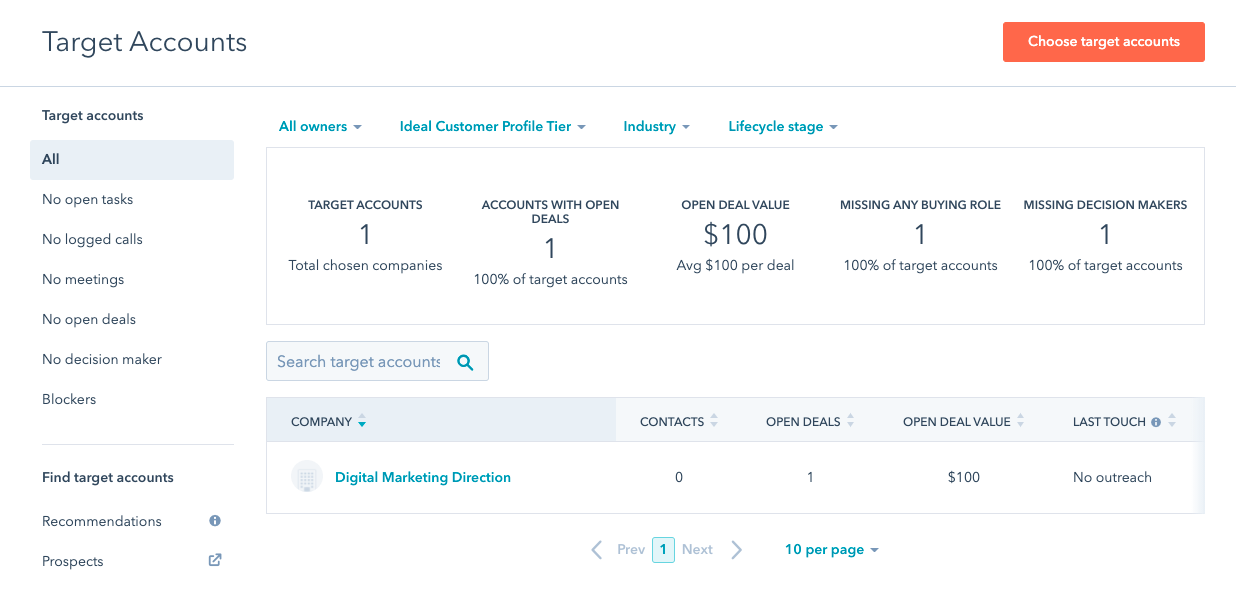According to the Digital Marketing Institute, personalized campaigns that are based on buyer personas drive 18 times more revenue than broadcast emails.
 But how do they differ from ideal customer profiles (ICPs)? It’s a good idea to have a clear understanding of the differences between the two and what each can do for your business.
But how do they differ from ideal customer profiles (ICPs)? It’s a good idea to have a clear understanding of the differences between the two and what each can do for your business.
Let’s examine what you should know about each from a high level and why using both of them can be beneficial to your organization.
What Is a Buyer Persona?
Do you know who you’re trying to reach with your marketing efforts? Who are the people you’re trying to connect with and convert?
According to HubSpot, buyer personas are semi-fictional representations of your ideal customers. These are based on data and research, and they help you narrow your marketing focus. Using information based on them allows you to channel your time and energy toward more qualified prospects. They include factors like demographics, as well as relevant goals, motivators, and challenges that your customers are facing. They can help give your campaigns structure, context, and relevancy.
Personas and Business-to-Business Organizations
Of course, buyer personas (also known as audience or marketing personas) are crucial to the success of business-to-consumer (B2C) organizations. But they are also important to have if your business sells products or services to other companies.
Your marketing must be targeted with a laser-like focus to connect with these buyers and purchasing influencers, and solve the problems they have.
A business-to-business (B2B) persona focuses on the individuals you ultimately sell to or who influence the sale. The difference in a B2B versus a B2C buyer persona is that it has more specifics about their professional role.
How many should your organization have? You may consider creating between two and five, but it can vary. The Digital Marketing Institute states that typically three to four buyer personas usually account for 90% of a company’s sales.
What Is an Ideal Customer Profile?
 Unlike a buyer persona, an ideal customer profile is not about a particular individual—it’s about the company as a whole.
Unlike a buyer persona, an ideal customer profile is not about a particular individual—it’s about the company as a whole.
Your ideal customer profile, also known as an ideal buyer profile, is a description of a fictitious account you want to sell to. Not only should your ideal customer receive significant value from your product or service, but they should also be a profitable and enjoyable type of company to do business with.
Your ideal account should be the company that is the best fit for your organization. Essentially, your ICP is a fabricated, hypothetical company that has all the qualities that are uniquely suited to do business with yours.
Determining your ideal customer profile is especially helpful if you are using an account-based marketing (ABM) approach because it helps you focus on selling to target accounts that your company is best suited for. This is because an ICP helps define the problems your company solves, identify the right companies for your B2B business, and connects your products and services with your customers’ needs — all crucial steps to having a successful account-based approach.
The Benefit of creating them
One of the main reasons ICPs are so helpful is that they can help you increase your customers’ estimated lifetime value since those customers should be good fits for your business, therefore typically requiring less customer support and having a lower attrition, or churn, rate.
Another benefit of creating an ICP is that it helps you maximize your marketing resources. Your ICP gives you the power to optimize the relevance of your marketing and track the results of your sales efforts from a B2B perspective. You can therefore easily view not just sold amounts by contact, deal, or sales representative in a customer relationship management (CRM) system. You can also view sold amounts by target company within HubSpot's Target Accounts dashboard, as mentioned in this previous post about ABM and noted here:

When you’re utilizing ABM strategies, it helps to know which companies are the best fit for your business, as those are the ones you should devote your resources to winning over. HubSpot's comprehensive growth suite helps make implementing targeted ABM campaigns and tracking the success of those efforts even easier and more transparent.
The Difference Between Audience Personas and Ideal Buyer Profiles — and the Power of Using Both
Why is this distinction such an important one? What are the differences between the two?
- Buyer personas focus on who you are working with. You’re considering how your leads — the people themselves — consume information and what problems and challenges you can solve for them. Your marketing teams can adjust how they communicate with leads based on these.
- Ideal customer profiles are targeted towards the overall fit of the account and focus on the company you’re selling to. It’s not about the individuals you encounter. Instead, it’s more about the organization as a whole.
Some may say that ideal customer profiles are made for B2B organizations that sell directly to companies, while buyer personas are for B2C organizations that sell directly to customers.
However, there’s no reason these two profiles can’t work together for B2B organizations. After all, you’re not selling your product or service to the name of a business. You’re interacting with people who are making decisions on behalf of their organization. You can therefore use both to meet the needs of the organization and the people who work there. Remember — the field of business-to-business interactions is still a human-to-human process!
Your buyer personas and ideal customer profiles should serve one another. Having well-defined profiles for each is the key to successfully marketing to businesses and making a meaningful impact on the people who work there.
Your ICPs help you define who to target, and your personas help you determine the best people to target at those companies, as well as the best ways to communicate with them. Both can help you close more profitable deals. And both are integral to account-based marketing, where you are focusing your efforts on individual target accounts.
Creating and Defining ICPs and Marketing Personas
Certain things should be included in your personas and profiles to ensure that they are specific enough to reach the right people without alienating potential customers who may prove to be your future best customer.
Creating Your Ideal Customer Profile
When defining your ICP, you are helping narrow down a broad field of potential leads to the ones who are the best fit for your company. What kinds of characteristics can help pinpoint your ideal customer profile? Here are some factors HubSpot recommends considering:
- What is the budget, revenue, and size of your ideal client's company?
- What industry do you serve? Are there specific verticals you should target or some that you should avoid?
- How does your geography influence your target market? Are your products or services limited to a specific region, or are there regions that are excluded from what you do?
This isn’t an exhaustive list, but it’s a good place to start to ensure your sales reps are spending time with leads that are a good fit for your company.
Building Your Personas
Since your buyer personas are fictionalized versions of real people, you should be able to include and identify the following for each persona you create:
- Their fictitious name, which can make them seem more real to you.
- Their job title, including vital information about their role within their organization. And about the company itself, including the organization’s size and sector.
- Their demographics, including age, gender, salary, location, and level of education.
- Their relevant goals and challenges. And how you can help them achieve those.
- Your marketing message, and how you can communicate that with your personas.
- Your elevator pitch and how it is tailored to your personas.
When you take the time to create both, you gain a competitive advantage over those who don't by creating a solid foundation for much more targeted, efficient, and relevant marketing, sales, and customer service strategies.
Our team of writers, web developers, designers, advertisers, strategists, and SEO experts can help you define and implement both of these. As well as use them to develop targeted growth strategies for your company. Want to learn more about what we can do for you? Request a consultation today.
Posted by Jackie Connors

Jackie Connors is the Founder & CEO of Digital Marketing Direction, a HubSpot Solutions Partner agency based in Texas. She provides inbound training, consulting, and content marketing services to mid-market companies.


 Email
Email Facebook
Facebook LinkedIn
LinkedIn